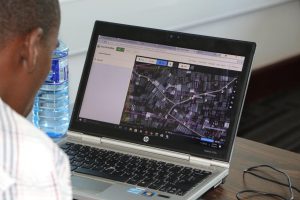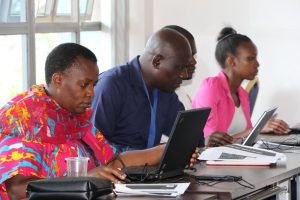By Mwangi Chege, Carol Wainaina and Caroline Kabaria
Slum areas are not just defined by the presence of poverty, they are also characterized by the near absence of public services. Residents of these areas often cannot access quality health and education services while infrastructure for water, sanitation and energy is usually woefully inadequate. This has impacts on the health and well-being of people who live in slums.
APHRC research has shown that slum dwellers have similar if not worse health outcomes than rural poor populations. High rates of infant mortality and deaths from infectious diseases as well as diarrheal diseases reflect the hard reality of life in slums. This is striking because many slum residents are people who left rural areas for urban centers, seeking to improve their quality of life.
In cases where public services such as clinics and hospitals within slums are provided, barriers to access still remain. Lack of financial resources can make it difficult for slum residents to utilize the few available facilities. Sometimes they simply cannot afford to take time off from work to seek the care they need. Poor political will on the part of municipal authorities may also result in the needs of slum residents being neglected.
APHRC has partnered with the University of Warwick to study healthcare-seeking practices among people living in the Nairobi slums of Korogocho and Viwandani. The study will also explore factors that influence these practices such as cost of healthcare, accessibility of facilities and quality of care. Other study cities include Ibadan, Nigeria; Karachi, Pakistan, and Dhaka, Bangladesh. Evidence from these diverse sites will improve understanding of what it takes to achieve effective and efficient delivery of healthcare for the urban poor.
A mapping marathon
One of the study activities is a mapping exercise to identify where healthcare facilities are located in Korogocho and Viwandani, to support further analysis on accessibility and costs. The first phase of this mapping was conducted in a mapathon held at the APHRC campus in January 2018. The mapathon involved university students, professional mappers, representatives from Korogocho and Viwandani as well as staff from the center. Their mapping skills ranged from novice to master-cartographer. These ‘citizen mappers’ used satellite images, existing maps and geographic information systems (GIS) software to add missing features and modify existing ones so that the maps are a more accurate representation of reality. Specific features that they were identifying included roads, health facilities, water sources and sanitation points in the two slum areas.
Professional mapper, Zachariah Muindi who has participated in a number of mapathons remarked on the importance of mapping slum areas. “Maps and geographic data can be used to tell stories from communities as well as address development challenges. Different organizations can use the data to provide solutions to needs that are highlighted by the maps. For instance, humanitarian organizations use this data when they are planning for provision of aid to areas affected by natural disasters.”
Participation by community members at the event was critical, because of their intimate familiarity with the areas being mapped. It also provided an opportunity for empowerment, as the skills they learned during the mapathon can be adapted and used for other community-building activities.
“The mapathon was totally a new experience for me! I only ever really use maps to get directions,” one of the participating APHRC staff members said. “By the end of it all I was impressed at what I had accomplished despite having no knowledge or experience in mapping.”
Speaking on his overall experience at the mapathon, Muindi said, “My experience at the mapathon was fantastic. I was able to map several buildings in Viwandani and to also assist in modifying buildings that had been mapped in an earlier exercise. Data accumulated through the mapping exercise will go a long way in assisting APHRC to provide lasting solutions for the people of Korogocho and Viwandani.”
The mapathon was just the first step in understanding patterns of health service delivery within the two Nairobi slums; the resultant maps will feed into the long-term project goal to develop viable models for delivery of health services in slums worldwide. While slums will continue to be part of our urban reality, poor healthcare service provision in these areas should not.


The research w as commissioned by the National Institute of Health Research using Official Development Assistance (ODA) funding. The views expressed are those of the author(s) and not necessarily those of the NHS, the NIHR or the Department of Health and Social Care.
as commissioned by the National Institute of Health Research using Official Development Assistance (ODA) funding. The views expressed are those of the author(s) and not necessarily those of the NHS, the NIHR or the Department of Health and Social Care.